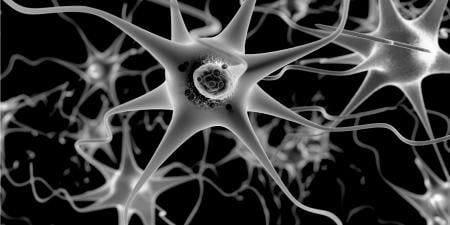Gray Matters: Integrative Approaches for Neuroscience, Ethics, and Society. Presidential Commission for the Study of Bioethical Issues; 2014. Vol. 1.
The BRAIN Research Initiative
There is this enormous mystery waiting to be unlocked, and the BRAIN initiative will change that by giving scientists the tools they need to get a dynamic picture of the brain in action and better understand how we think and how we learn and how we remember. And that knowledge could be—will be—transformative.
President Barack Obama, April 2, 2013 [1]
On April 2, 2013, President Obama introduced an ambitious and far-reaching scientific vision prescribing a directed evolution of and funded mandate for future neuroscience research in the United States [1, 2]. In this speech, the president used contemporary and historical examples of how Americans have come together, both through private enterprise and governmentally supported programs, to tackle the large problems of the day. In this way, he made the case that investment in innovation has kept the United States at the forefront of worldwide scientific progress, supported a “feed-forward” process of innovation, increased domestic prosperity, and benefited citizens worldwide.
The Brain Research through Advancing Innovative Technologies (BRAIN) Initiative was developed in recognition that neuroscience research is in a period of transition. The approaches of modern molecular neuroscience research, developed over the past century, have provided the current foundational understanding of neural structure, function, and connectivity of the brain. This knowledge has provided a perspective for understanding many pathologic neural processes resulting from disordered function at the level of neural networks of activity. The BRAIN Initiative recognizes that a comprehensive investigation of neural function and dysfunction at a network level will require investment in the development of a new array of investigative tools. Historical precedent indicates that this comprehensive investment will result in far-reaching advances, some predicted and many more unforeseen. The National Institutes of Health (NIH), National Science Foundation (NSF), Defense Advanced Research Projects Agency (DARPA), Food and Drug Administration (FDA), and Intelligence Advanced Research Projects Activity (IARPA) are involved in the BRAIN Initiative. Each is approaching the aims of the initiative through the perspective of its individual agency mandates [3]. Additionally, companies, collaborative research consortiums, and numerous academic institutions have aligned their research priorities with BRAIN Initiative goals [3].
Before Adhering to a Standard, You Must Define It
I want to ensure that researchers maintain the highest ethical standards as the field of neuroscience continues to progress. As part of this commitment, we must ensure that neuroscientific investigational methods, technologies, and protocols are consistent with sound ethical principles and practices.
President Barack Obama, July 1, 2013 [4]
In his rollout of the BRAIN Initiative, the president specifically addressed the need for such research to be conducted in a responsible manner. To accomplish this, he indicated that guidance would be sought from the Presidential Commission for the Study of Bioethical Issues to identify a set of best ethical practices. This was followed up with a letter to the commission on July 1, 2013, requesting that the committee engage the scientific community and the general public to guide the conduct of BRAIN Initiative-related research. In part, this request was designed to consider the potential societal and ethical implications associated with these studies and interpretation of their results. Gray Matters is the first of the commission’s two planned reports on this topic.
Completion of this report followed two public meetings in which comment was obtained from thought leaders from a broad array of disciplines. In addition, public comment was solicited. The report sets forth specific recommendations to support integration of bioethics training and considerations throughout all levels of scientific inquiry [4]. A follow-up report will explore mechanisms to implement these recommendations [5]. Published in May 2014, Gray Matters highlights four guiding recommendations that should be implemented. These include:
- Integrate ethics early and explicitly throughout research [6].
- Evaluate existing and innovative approaches to ethics integration [7].
- Integrate ethics and science through education at all levels [8].
- Explicitly include ethical perspectives in advisory and review bodies [9].
Creating a Culture of Ethical Cognizance
The four primary recommendations set forth by the committee represent a concise schema for promoting a pervasive culture of ethical cognizance within the scientific community by emphasizing ethics integration into all levels of biomedical research. While a second volume of Gray Matters is intended to explore specific mechanisms of integration in detail, the authors of the first report provide some thoughts on achieving this goal. Specifically, they recommend a commitment of “financial resources, human capital, and expertise” [10], indicating a recognition that dedicated funding will only be helpful in a broader context.
In scientific education, ethics-related studies are primarily emphasized beginning at the graduate level. The authors stress that ethics training should be more broadly integrated well before the graduate level and continue throughout the researcher’s professional career.
Similarly, they recommend that evidence of ethics integration into the scientific process be sought at the stages of hypothesis design and grant application. They recommend that funding agencies acquire the expertise to assess whether ethical considerations have been built into proposed research agendas when reviewing applications for funds.
Incorporation of these and other such changes are intended to ensure that: (a) the ethical implications of a line of scientific inquiry are considered at the earliest stages, (b) scientists approach hypothesis generation with fluency in ethical analysis and reflection, and (c) ethicists and ethics-related perspectives are solicited and mobilized throughout the entire scientific process. Discourse between ethicists and scientists at earlier stages of hypothesis generation and encouraging scientists to cultivate a greater fluency in ethical analysis may, in turn, improve ethicists’ understanding of relevant scientific concepts at a more granular level. Proactive attempts to achieve improved ethical cognizance and ethical integration are crucially important: the results of future neuroscience-related research may have far-reaching personal, societal, and legal implications that can now only be poorly predicted.
Beginning with the End in Mind
Published only three years after the Presidential Commission for the Study of Bioethical Issues defended the adequacy of current safeguards to mitigate risk to research participants—in a report that revealed the US Public Health Service’s support for unethical research activities in Guatemala between 1946 and 1948 [11]—Gray Matters represents a proactive approach to developing both a durable ethical foundation and a new paradigm for neuroscience-related research. In this way, a path is being laid for future best practices toward systematic ethics integration beginning with initial benchside hypothesis generation and persisting through bedside clinical investigation. It is very possible that the first innovation born of the BRAIN Initiative may be the development of an improved ethical foundation from which to conduct all future biomedical scientific research.
References
-
Obama B. Remarks by the President on the BRAIN Initiative and American innovation [news release]. Washington, DC: White House Office of the Press Secretary; April 2, 2013. http://www.whitehouse.gov/the-press-office/2013/04/02/remarks-president-brain-initiative-and-american-innovation. Accessed November 25, 2014.
-
President Obama speaks on the BRAIN initiative and American innovation [video]. http://www.whitehouse.gov/photos-and-video/video/2013/04/02/president-obama-speaks-brain-initiative-and-american-innovation. Accessed November 25, 2014.
-
White House. Factsheet: over $300 million in support of the President’s BRAIN Initiative. http://www.whitehouse.gov/sites/default/files/microsites/ostp/brain_fact_sheet_9_30_2014_final.pdf. Accessed November 25, 2014.
-
Gray Matters: Integrative Approaches for Neuroscience, Ethics, and Society. Presidential Commission for the Study of Bioethical Issues; 2014. Vol 1. http://www.bioethics.gov/sites/default/files/Gray%20Matters%20Vol%201.pdf. National Institutes of Health; 2013. Accessed November 25, 2014.
-
US Department of Health and Human Services. Notice of meeting: public meeting of the Presidential Commission for the Study of Bioethical Issues. https://www.federalregister.gov/articles/2014/10/14/2014-24334/public-meeting-of-the-presidential-commission-for-the-study-of-bioethical-issues. Accessed November 25, 2014.
-
Gray Matters Volume 1, 25.
-
Gray Matters Volume 1, 27.
-
2018;
Gray Matters Volume 1, 29.
-
Gray Matters Volume 1, 30.
-
Gray Matters Volume 1, 26.
-
Moral Science: Protecting Participants in Human Subjects Research.Presidential Commission for the Study of Bioethical Issues; 2011. http://bioethics.gov/sites/default/files/Moral%20Science%20June%202012.pdf. Accessed November 25, 2014.



